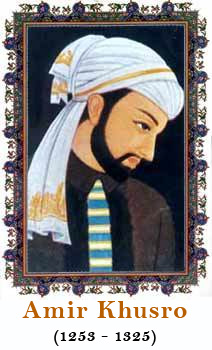Sitar

The Sitar Origin and Development
The Sitar occupies a place of price among Indian musical instruments. It is easily the most charming of all instruments. The Sitar was known in ancient India by various names like devadattaa, maruyashti, mahati, parivaadini, saptatantri, etc.,
SITAR is one of the most popular, melodious and difficult instrument of our country. It was invented between 12 and 14 Century AD by AMIR KHUSRO, the great Sufi, Poet and Saint. It was initially called "Sehtar", a Persion word which means 3 wired instrument. Later on, his disciples and descendants improved Siar and the present Sitar has eighteen wires, seven main and eleven sympathetic. Many stalwarts like Pandit Ravi Shankar, Ustad Vilayat Khan, Ustad Adbul Hallem Zafar, Pandit Buddhaditya Mukherjee and the present maestros like Ustad Shahid Prevez and Pandit BUddhaditya Mukherjee have established Sitar as the most versatile instrument of the world. Its versatility is such that apart from solos and Jugal Bandis, it is extensively used in film music, light much, dance ballets and well as fusion music. Apart from Indians many foreign students are also learning Sitar very seriously and are performing very successfully in many countries. WIthout any hesitation, one can say that Sitar is the most beautiful and an extraordinary instrument of our country.

Typically measuring about 1.2 meters (4 feet) in length, the sitar has a deep pear-shaped gourd body; a long, wide hollow wooden next; both front and side tuning pegs; and 20 arched movable frets. Its strings are metal; there are usually five melody strings, one or two drone strings used to accentuate the rhythm or pulse, and as many as 13 sympathetic strings beneath the frets in the next that are tuned to the notes of the raga (melodic framework of the performance). The convex metal frets are tied along the next, which enables them to be moved as needed. The sitar often has a resonating gourd under the pegbox end of the next; this balances the weight of the instrument and helps support it when it is not being played. Musicians hold the sitar at a 45' angle on their laps while seated. They pluck the strings with a wire plectrum worn on the right forefinger while the left hand manipulates the strings with subtle pressure on or between the frets and with sideways pulls of the strings.
At present, Sri Pandurang Mutalik is working as a Lecturer in Sitar in our college.
